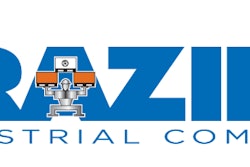
Supply chains are finally growing out of the old belief that product returns are something a retailer or manufacturer simply can’t do anything about. However, as returns management wakes up in the 21st century, some common, costly myths still linger, draining millions from net sales every day. See if you recognize any of these costly, head-in-the-sand beliefs:
Myth #1: Returns are not a big deal to consumers
“Big mistake. Big.” Remember when Julia Roberts said that in the classic romantic comedy Pretty Woman after one expensive store had refused to serve her the previous day? She went back to that store, loaded down with bags from expensive boutiques to deliver that line, just to make them realize the error of their ways.
Today’s shoppers, especially in e-commerce, aren’t even giving you the courtesy to come back and insult you. They just move on. Or worse- they leave a negative review online. Contemporary shoppers are making it crystal clear that returns are a part of their experience and a key to their satisfaction that cannot be ignored:
● UPS reported 68 percent of consumers now say they check the returns policy before they make a purchase.
● Invesp reported 92 percent of shoppers say they will buy from you again if returns are easy.
Myth #2: Returns are a cost of business I can’t control.
Not even close to the truth. When you collect and analyze the right data on returns you can save millions. Data can change loss into profit when you analyze returns data, such as:
● Reason for return
● Package damage
● Category, product and SKU-level returns trends
The right data on seasonal and overstocks can better inform ordering and forward planning.
Struggling product launches can be rescued, and overall operational costs can be reduced drastically. After one multi-phase supply chain study, a major retailer found it had returns rates eight times higher than the industry average in some areas. The retailer projected that it saved $450 million a year upon implementation of recommendations from supply chain and returns analytics experts.
Myth #3: Data from returns can’t help me manage my business better.
Try to tell me with a straight face that operational efficiency and lower transportation cost don’t improve the management of your business. Consider how it would improve your business if you had the ability to know about product quality or packaging issues, freshness challenges, in-stream damage or returns policy liability. Returns are products your shoppers paid for and didn’t keep – you can’t say that insight into why that happens couldn’t improve the way you run the business. Being able to identify an issue and make quick-response adjustments can make the difference between success and failure in product launches, promotions and seasonal competitive surges.
Myth #4: The size of the prize is too small.
The right returns processor, with the right returns processing expertise and facility footprint can help you reduce transportation cost by at least 16 percent and create other operational savings worth as much as 2.5 percent of retail sales.
E-commerce customers want their money back on returns pronto. With the right facility setup, processing efficiency and transportation model, you can improve your speed to credit from weeks to days, often by as much as 50 percent. That’s no small prize when people will shop elsewhere next time if you don’t get their money back fast enough. Among shoppers satisfied with the returns process, 95 percent are likely to purchase with the retailer again, according to a 2017 National Retail Foundation survey.
Myth #5: A third party can’t help me protect my brand.
Fraudulent returns are a growing concern. In 2017, return fraud and abuse was a $22.8 billion hit to retailers, at 6.6 percent of total returns, according to the National Retail Foundation. With the right returns expertise in your reverse logistics processing, you can identify fraudulent returns through inspection and processing and use data analysis as an effective tool to detect it in the first place. The right data analysis can guide you to a returns policy that satisfies the customer but limits your exposure to fraud and abuse.
From another perspective, if you have product to liquidate, you definitely don’t want it for sale cheap at deep discount stores or in flea markets within miles of where it sits at full retail price. The right liquidator can segment its buyer base to avoid such problems, and even resell liquidated goods out-of-market or offshore to protect your brand.


















